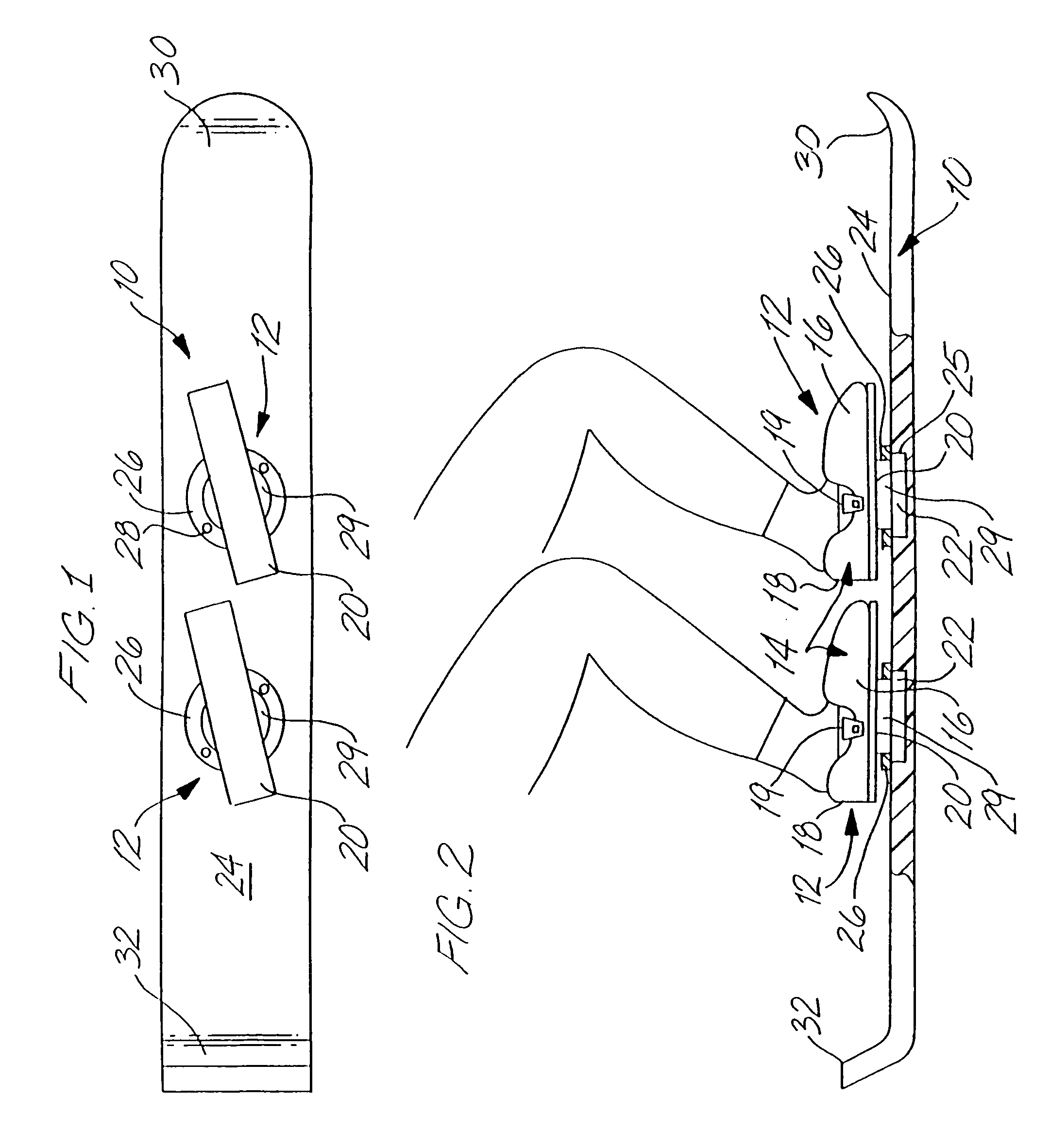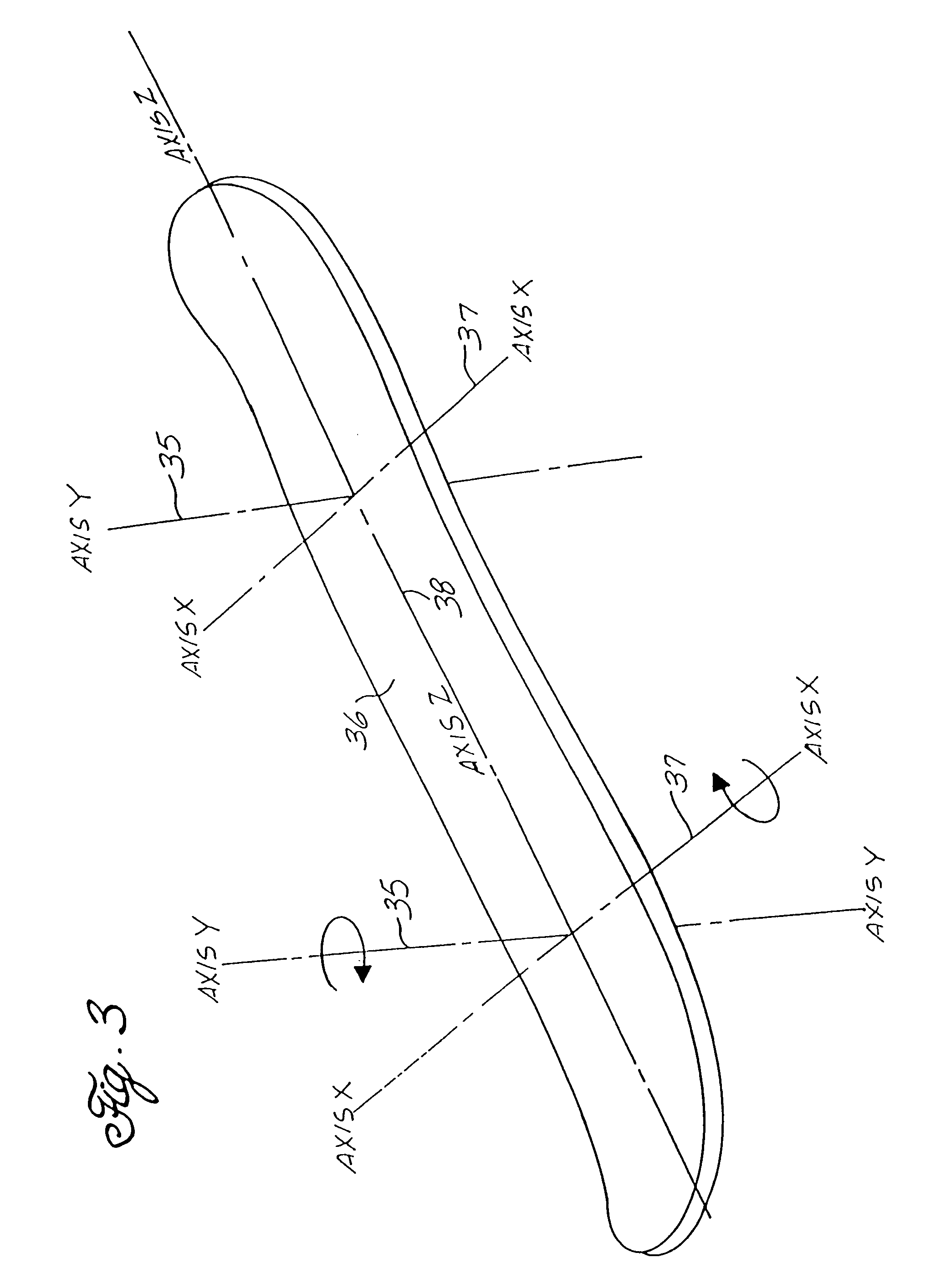Freely rotatable binding for snowboarding and other single-board sports
a single-board sport, free-rotation technology, applied in the direction of skating, sports equipment, transportation and packaging, etc., can solve the problems of unnatural and awkward knee and ankle angle, limited use, and difficulty in walking to the ski lift with one foot removed from the snowboard, so as to reduce the probability of knee and ankle injury, increase the maneuverability of the snowboard, and increase the feeling of floating
- Summary
- Abstract
- Description
- Claims
- Application Information
AI Technical Summary
Benefits of technology
Problems solved by technology
Method used
Image
Examples
Embodiment Construction
[0020]FIGS. 1 and 2 show a snowboard 10 with a pair of rotatable binding assemblies 12 spaced apart along a central longitudinal axis of the snowboard. Each rotatable binding assembly 12 incorporates a binding 14 having an instep element 16 and a heel element 18. When a booted foot is inserted into binding 14, the instep element is engaged by clamping it down onto the top of the boot, holding the boot firmly in place. The instep element prevents any forward or lateral motion of the foot relative to the binding. The heel element engages the heel of the boot and prevents any backward motion of the foot relative to the binding. A clamp 19, for securing the instep and heel elements to the boot may be of a buckle type, VELCRO, lacing, or other suitable type of clamp that will hold the instep and heel of the boot locked in place on the binding. Step-in or strap-in bindings are equally useful.
[0021]The heel and instep elements of binding 14 are attached to a rotatable plate 20. The binding...
PUM
 Login to View More
Login to View More Abstract
Description
Claims
Application Information
 Login to View More
Login to View More - R&D
- Intellectual Property
- Life Sciences
- Materials
- Tech Scout
- Unparalleled Data Quality
- Higher Quality Content
- 60% Fewer Hallucinations
Browse by: Latest US Patents, China's latest patents, Technical Efficacy Thesaurus, Application Domain, Technology Topic, Popular Technical Reports.
© 2025 PatSnap. All rights reserved.Legal|Privacy policy|Modern Slavery Act Transparency Statement|Sitemap|About US| Contact US: help@patsnap.com



